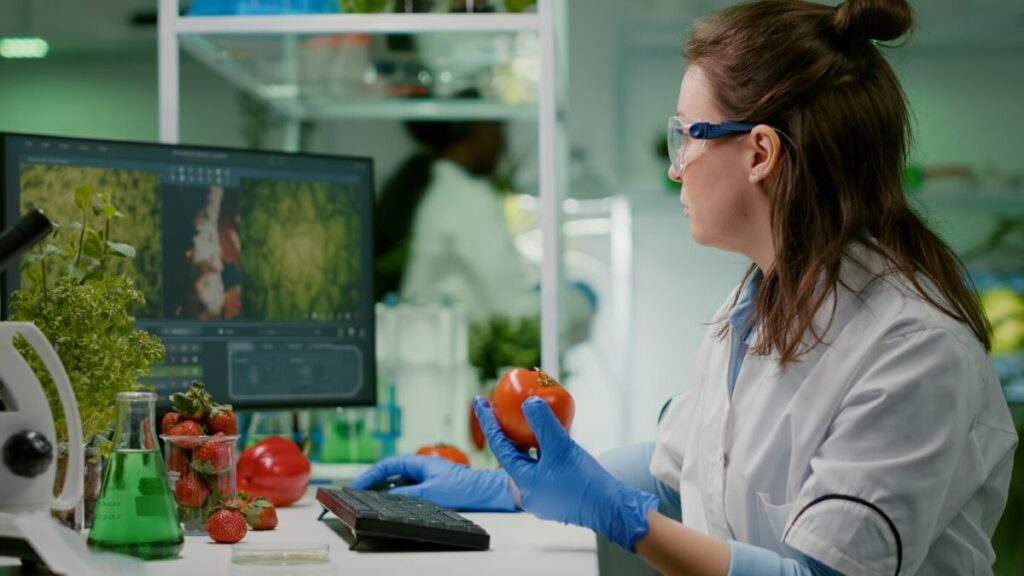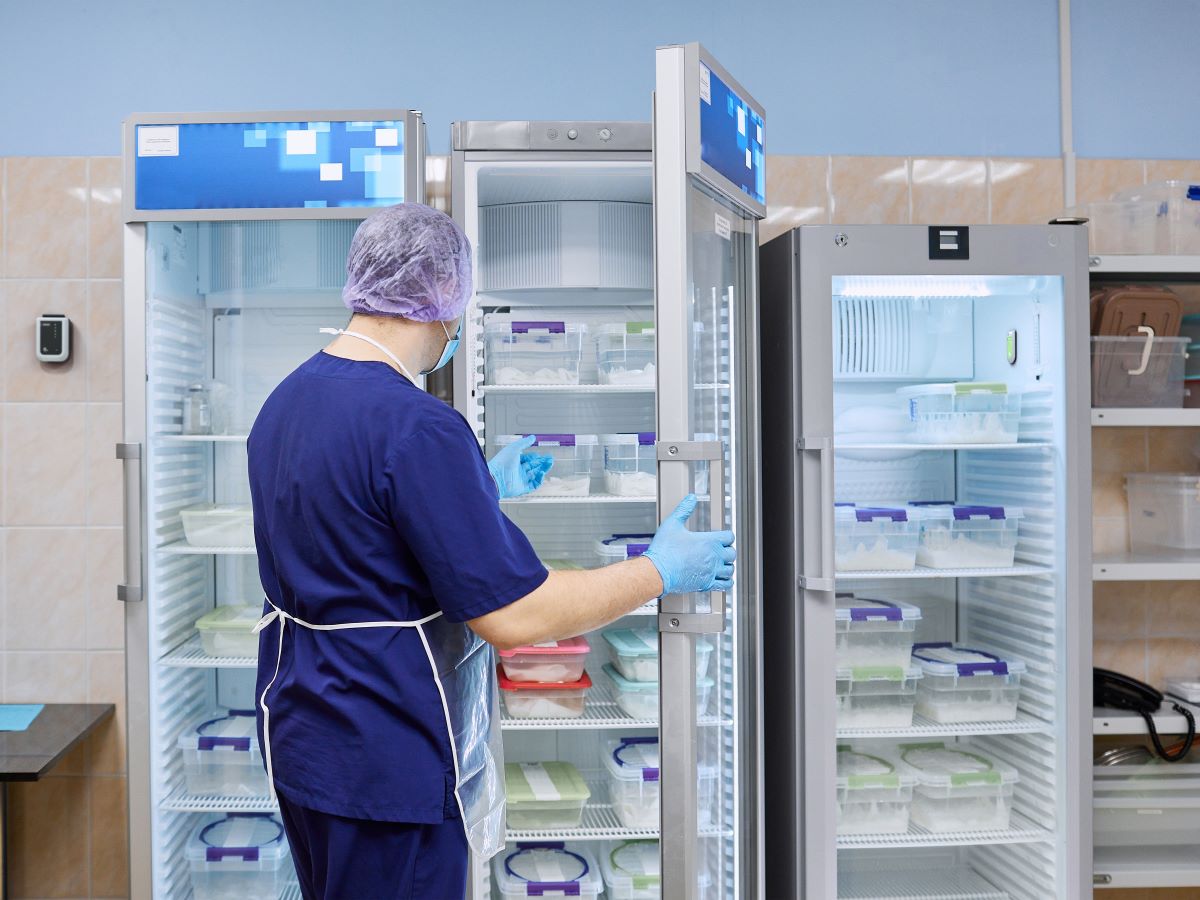Fridge monitoring systems are a crucial technological advancement in modern food safety management. These automated solutions continuously track and record refrigeration temperatures, acting as watchful protectors of food safety standards across various industries.
HACCP (Hazard Analysis Critical Control Points) is the foundation of food safety protocols, establishing systematic preventive measures to identify and control potential hazards. This internationally recognised framework requires strict temperature monitoring as a basic necessity for upholding food safety standards.
The integration of automated fridge monitoring systems directly supports HACCP compliance through:
- Real-time temperature tracking
- Automated data logging
- Instant alerts for temperature deviations
- Digital record-keeping for audit trails
These systems transform traditional manual monitoring processes into streamlined, accurate operations. By maintaining precise temperature control and documentation, businesses can ensure food safety, protect their reputation, and meet regulatory requirements with confidence.
The implementation of strong fridge monitoring solutions is essential for organisations dedicated to upholding the highest standards of food safety management while achieving operational excellence.
Understanding HACCP Compliance in Food Safety
HACCP (Hazard Analysis and Critical Control Points) establishes systematic preventive measures for food safety across the food industry. This comprehensive approach identifies, evaluates, and controls potential food safety hazards through seven essential principles:
- Hazard Analysis: Identification of biological, chemical, and physical risks
- Critical Control Points: Determination of specific points where control measures prevent hazards
- Critical Limits: Setting measurable parameters for each control point
- Monitoring Procedures: Establishing methods to track critical control points
- Corrective Actions: Defining steps to address deviations
- Verification: Regular assessment of HACCP system effectiveness
- Documentation: Maintaining accurate records of all procedures
Temperature control stands as a crucial element in preventing microbial growth and food contamination. Proper refrigeration temperatures inhibit bacterial proliferation, with most harmful bacteria multiplying rapidly between 5°C and 60°C (the danger zone).
Current food safety regulations mandate specific temperature monitoring requirements:
- Regular temperature checks at designated intervals
- Accurate documentation of temperature readings
- Immediate corrective actions for temperature breaches
- Calibrated monitoring equipment maintenance
- Staff training on temperature monitoring protocols
These regulatory standards apply across various food service environments, from commercial kitchens to healthcare facilities. Proper temperature monitoring serves as a critical control point in maintaining food safety standards and achieving HACCP compliance.
The Role of Fridge Monitoring Systems in HACCP Compliance
Modern fridge monitoring systems play a crucial role in ensuring food safety by continuously monitoring temperatures. These systems keep a close eye on refrigeration units, recording temperature data at regular intervals, sometimes as often as every few minutes.
Automated Temperature Monitoring
- Digital sensors provide round-the-clock monitoring without interruption
- Precise measurements accurate to ±0.5°C
- Continuous data collection across multiple units at the same time
The shift from manual to automated data logging represents a significant advancement in HACCP compliance. Traditional paper-based temperature logs are prone to human error, missed checks, and data manipulation. Automated systems eliminate these risks through:
- Tamper-proof digital records
- Standardised measurement protocols
- Elimination of transcription errors
- Guaranteed compliance with checking schedules
Immediate Alert Systems
Temperature deviations trigger immediate notifications when readings fall outside pre-set safety limits. These alert mechanisms:
- Send instant notifications via SMS, email, or app alerts
- Enable quick response to potential safety issues
- Prevent stock loss through early intervention
- Document all corrective actions automatically
The integration of these monitoring capabilities creates an unbroken chain of temperature documentation – essential for both regulatory compliance and food safety assurance. Advanced systems like Squizify provide comprehensive monitoring solutions that transform temperature control from a manual task into an automated, reliable process.
Moreover, the use of game-changing tools for food safety management such as digital HACCP compliance products can further enhance product safety and streamline processes.
Key Features of Modern Fridge Monitoring Systems
Modern fridge monitoring systems incorporate advanced technological features designed to deliver precise temperature control and seamless monitoring capabilities:
1. Real-Time Temperature Sensors
- High-precision digital sensors with accuracy ratings of ±0.5°C
- Wireless connectivity for instant data transmission
- Multiple sensor placement options for comprehensive temperature mapping
- Automated calibration features maintaining measurement accuracy
2. Remote Monitoring Capabilities
- Secure web-based dashboard access from any location
- Mobile applications for iOS and Android devices
- User-friendly interface displaying real-time temperature data
- Historical temperature trend analysis and reporting
3. Customisable Alert System
- SMS and email notifications for temperature breaches
- Adjustable temperature thresholds based on specific storage requirements
- Escalation protocols for unaddressed temperature incidents
- Power failure and sensor malfunction notifications

4. Data Management Features
- Automated data logging at customisable intervals
- Secure cloud storage with encrypted data transmission
- Export capabilities for regulatory compliance reporting
- Integration options with existing management systems
These sophisticated monitoring systems transform traditional temperature control methods into streamlined digital solutions. The combination of precise sensors, remote accessibility, and customisable alerts creates a robust monitoring framework that supports consistent HACCP compliance across food service operations.
Operational Benefits of Implementing Fridge Monitoring Systems for HACCP Compliance
The implementation of automated fridge monitoring systems brings substantial operational advantages that extend beyond basic compliance requirements:
Error Reduction Through Automation
- Elimination of paper-based temperature logs
- Prevention of data entry mistakes
- Removal of illegible handwriting issues
- Protection against lost or damaged manual records
Time and Cost Efficiency
- Staff freed from repetitive temperature checking duties
- Reduced labour costs associated with manual monitoring
- Minimised food waste through early temperature deviation alerts
- Decreased compliance-related administrative burden
Streamlined Operations
- Real-time data accessibility for immediate decision making
- Automated report generation for audits and inspections
- Centralised record keeping across multiple refrigeration units
- Instant access to historical temperature data
The automation of temperature monitoring creates a reliable system that operates continuously without human intervention. Staff members can focus on core business activities while maintaining confidence in food safety standards. The reduction in manual tasks translates to significant time savings, with estimates showing up to 75% decrease in time spent on temperature monitoring activities.
Digital documentation provides immediate access to accurate records, enabling quick responses to potential issues and streamlined audit processes. This systematic approach to temperature monitoring establishes a robust foundation for maintaining HACCP compliance while optimising operational resources.
See Also : Food Safety and Compliance Systems for Growing Businesses
Industry Applications and Versatility of Fridge Monitoring Solutions for HACCP Compliance
Fridge monitoring systems show impressive flexibility across various industries, each with its own specific temperature control needs and compliance standards.
Healthcare Facilities
- Hospital pharmacies maintaining precise temperatures for medications
- Blood bank storage units requiring strict temperature ranges
- Laboratory specimen preservation
- Vaccine storage facilities with critical temperature thresholds
Hospitality Industry
- Restaurant walk-in coolers and freezers
- Hotel kitchen refrigeration units
- Catering service mobile cold storage
- Bar and beverage cooling systems
The versatility of modern monitoring solutions accommodates diverse commercial refrigeration setups:
- Multi-door configurations – allowing individual monitoring of compartments
- Split system setups – tracking temperatures across separate cooling zones
- Mobile refrigeration units – enabling temperature control during transport
- Cold room installations – maintaining large-scale storage environments
These systems adapt to specific industry needs through:
- Customisable temperature ranges for different food types
- Variable alert thresholds based on storage requirements
- Scalable sensor networks for facilities of any size
- Integration with existing refrigeration infrastructure
The flexibility extends to specialised applications such as blast chillers in commercial kitchens and ultra-low temperature freezers in research facilities, demonstrating the comprehensive scope of modern monitoring solutions.
Technology Integration and Data Accessibility with Fridge Monitoring Systems for HACCP Compliance
Modern fridge monitoring systems use secure cloud-based platforms to completely change how data is managed and accessed. These advanced software solutions create a centralised hub for temperature monitoring data, making sure that important information is protected yet easily accessible.
Key Security Features:
- Enterprise-grade encryption protocols
- Multi-factor authentication
- Regular automated backups
- Secure API integrations
- Comprehensive audit trails
The integration of connected devices changes the way businesses interact with their monitoring systems. Staff can access real-time temperature data through:
- Mobile applications
- Web-based dashboards
- Tablet interfaces
- Smart device notifications
This seamless connectivity allows for immediate action to be taken in response to temperature changes, no matter where someone is physically located. The system keeps detailed digital records of:
- Temperature readings
- Alert notifications
- Corrective actions taken
- Compliance reports
- Historical data trends
Cloud-based platforms remove the limitations of traditional data storage methods, offering unlimited space for storing historical records. This strong storage capability supports both regular HACCP documentation needs and unexpected audit requests.
The integration of smart algorithms enables pattern recognition and predictive analytics, helping identify potential equipment issues before they affect food safety. These intelligent systems can automatically generate customised reports, streamlining compliance documentation while maintaining accuracy and reliability.

Selecting the Right Fridge Monitoring System for HACCP Compliance
Choosing the right fridge monitoring system requires careful consideration of your specific operational requirements and business needs. A customizable software solution allows businesses to create tailored checklists that align with their unique HACCP compliance protocols.
Key Selection Criteria:
1. Operational Compatibility
When evaluating a fridge monitoring system, it’s important to consider its compatibility with your existing operations. Look for a system that can scale as your business grows, integrate seamlessly with your current infrastructure, and has a user-friendly interface that will be easy for your staff to adopt.
2. Customisation Options
HACCP compliance may require specific temperature thresholds, alert parameters, and reporting templates that are unique to your business. Therefore, it’s crucial to choose a monitoring system that offers flexibility in these areas so you can tailor it to meet your specific needs.
Professional consultation through personalised demos enables businesses to understand system capabilities and customisation options. These sessions provide valuable insights into:
- Specific feature applications
- Staff training requirements
- Implementation timelines
- Technical support availability
A thorough evaluation process through system demonstrations helps identify the most suitable monitoring solution. Direct engagement with service providers allows businesses to:
- Assess real-time monitoring capabilities
- Review data management features
- Understand alert mechanisms
- Explore customisation possibilities
The right monitoring system should offer flexibility in checklist creation, allowing businesses to incorporate specific compliance requirements while maintaining HACCP standards. This adaptability ensures the system grows with changing operational needs and regulatory demands.
Conclusion
Fridge monitoring systems are an essential part of modern food safety management, providing critical advantages for businesses committed to HACCP compliance. These systems turn regulatory requirements into opportunities for operational excellence through:
- Improved Food Safety Assurance: Continuous temperature monitoring protects product quality
- Stronger Brand Protection: Automated compliance documentation builds trust
- Increased Customer Satisfaction: Consistent food safety practices protect consumer health
The implementation of advanced monitoring technology represents a strategic investment in business sustainability. Companies embracing these solutions position themselves as leaders in food safety excellence, demonstrating dedication to quality management and regulatory adherence.
The key to maintaining HACCP compliance is to adopt strong monitoring systems that combine accuracy, dependability, and user-friendliness. This technological advancement not only meets current compliance standards but also lays the groundwork for future food safety innovations and operational improvements.


